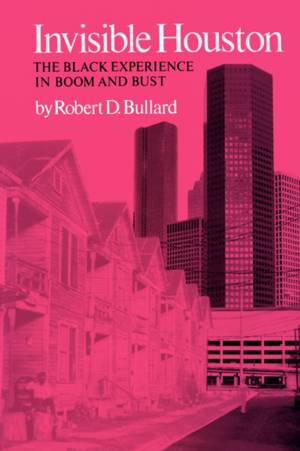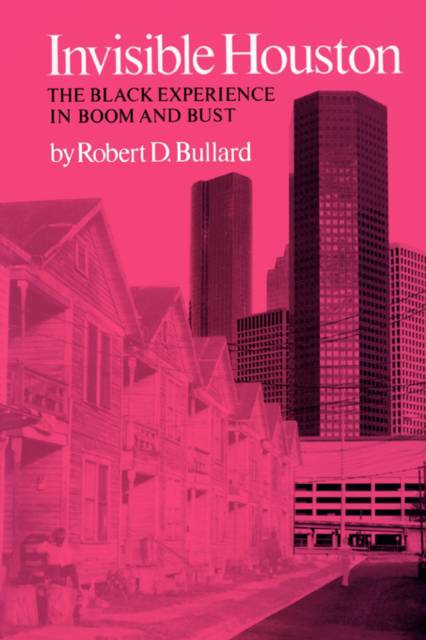
- Afhalen na 1 uur in een winkel met voorraad
- Gratis thuislevering in België vanaf € 30
- Ruim aanbod met 7 miljoen producten
- Afhalen na 1 uur in een winkel met voorraad
- Gratis thuislevering in België vanaf € 30
- Ruim aanbod met 7 miljoen producten
Zoeken
Omschrijving
Houston was Boomtown USA in the 1970s, growing through tremendous immigration of people and through frequent annexation of outlying areas. But in the shadow of the high-rise "petropolis" was another city ignored by and invisible to Houston municipal boosters and the national media. Black Houston, the largest black community in the South, remained largely untouched by the benefits of the boom but bore many of the burdens. Robert D. Bullard systematically explores major demographic, social, economic, and political factors that helped make Houston the "golden buckle" of the Sunbelt. He then chronicles the rise of Houston's black neighborhoods and analyzes the problems that have accrued to the black community over the years, concentrating on the boom era of the 1970s and the dwindling of the economy and of government commitment to affirmative action in the late 1980s. Case studies conducted in Houston's Third Ward--a microcosm of the larger black community--provide data on housing patterns, discrimination, pollution, law enforcement, and leadership, issues that the author discusses and relates to the larger ones of institutional racism, poverty, and politics. During Houston's rapid growth, freeways were built over black neighborhoods and municipal services were stretched away from the inner city and poverty pockets to the new, far-flung, and mostly white city limits. Businesses thrived, but many jobs called for advanced education and skills, while black youth still suffered from inadequate schools, inexperienced teachers, and, later, unemployment rates nearly double those of whites. When the oil-based economy collapsed in the early eighties, many blacks again bore a heavier share of the burdens. Invisible Houston describes the rich cultural history of the South's largest black community and analyzes the contemporary issues that offer the chance for black Houston to become visible to itself, to the larger community, and to the nation.
Specificaties
Betrokkenen
- Auteur(s):
- Uitgeverij:
Inhoud
- Aantal bladzijden:
- 176
- Taal:
- Engels
- Reeks:
- Reeksnummer:
- nr. 6
Eigenschappen
- Productcode (EAN):
- 9780890963579
- Verschijningsdatum:
- 1/06/2000
- Uitvoering:
- Paperback
- Formaat:
- Trade paperback (VS)
- Afmetingen:
- 156 mm x 228 mm
- Gewicht:
- 285 g

Alleen bij Standaard Boekhandel
+ 44 punten op je klantenkaart van Standaard Boekhandel
Beoordelingen
We publiceren alleen reviews die voldoen aan de voorwaarden voor reviews. Bekijk onze voorwaarden voor reviews.











